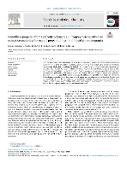Nanofibers prepared from synthetic polymers and biopolymers as advanced extraction materials for sample preparation prior to liquid chromatography

Publication date
2024Published in
Trends in Analytical ChemistryVolume / Issue
180 (November)ISBN / ISSN
ISSN: 0165-9936ISBN / ISSN
eISSN: 1879-3142Metadata
Show full item recordCollections
This publication has a published version with DOI 10.1016/j.trac.2024.117912
Abstract
Since the beginning of this millennium, there has been an increasing interest in nanofiber-based sorbents for extraction due to their accessibility, scalability, ease of handling, high surface area, variety of chemistries available, and applications in miniaturized methods. Organic and inorganic materials have been converted into nanofibers using various techniques to obtain sorbents for use in analytical chemistry, such as sensors, filter membranes, sorptive phases, and extraction media. Polymer nanofibers are mainly prepared by electrospinning of polystyrene, polyamides, and polyacrylonitrile. In contrast, this review aims to survey other polymers, including biopolymers and biodegradable polymers. In addition, the possibilities of innovative alternative fabrication techniques leading to fiber materials with unique mechanical properties are described. We also focus on unexplored extraction formats using polymer nanofibers. Examples of recent applications benefiting from desorption with minimal solvent volume and on-line hyphenation to chromatographic methods are reported. Finally, the future prospects of these nanosorbents are discussed.
Keywords
Sample preparation, Miniaturization, Biodegradability, Polymer, Nanomateral, Electrospinning, Melt blowing
Permanent link
https://hdl.handle.net/20.500.14178/2589License
Full text of this result is licensed under: Creative Commons Uveďte původ 4.0 International






